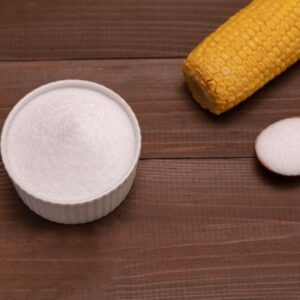
IS YOUR Water Contaminated with PFAS? Find Out
Put DOWN that water glass and step away from the tap. Don’t drink another drop until you read this. Because what could be in there might turn your stomach.
In the 1940s, the U.S. began researching and manufacturing PFOA, the FIRST hazardous per- and poly-fluoroalkyl (PFAS) compounds. By the early 1950s, it was joined by PFOS, and others soon followed.
Many products we commonly use were soon being manufactured with or from PFAS. For example, furniture, carpeting, food packaging, cookware, and fire-fighting foam.
Soon, these long-lasting, harmful chemicals (nicknamed “forever chemicals”) began building up EVERYWHERE… even inside of US. In fact, it’s estimated that PFAS are in the blood of 97 percent of Americans.
But don’t worry. You can find out if there are PFAS in your water and lower the risk of exposure for you and your entire family…
PFAS are leaked into our rivers from factories, garbage dumps, and discarded products. And that, of course, means they end up in our drinking water, which is one of the main ways the chemicals enter our bodies.
Animal and human studies link PFAS to thyroid hormone disruption, liver issues, cancer, and elevated cholesterol. And in 2005, an EPA advisory panel concluded that PFOA is a “likely” human carcinogen.
While some PFAS were pulled off the market in the early 2000s, new ones have been created and are still finding their way into the environment and us.
If this makes you look at your water glass suspiciously, you SHOULD.
Knowing where your water comes from is the best way to determine how likely it is to be contaminated with PFAS.
You’re less likely to be exposed to PFAS through your drinking water if it comes from a public source rather than a private well. This is because, by law, utility companies have to regularly test for contaminants and tell the public the results.
The non-profit Environmental Working Group (EWG) has an excellent online tap-water database that gathers all this data into one spot. All you have to do is type in your zip code to get lots of useful information.
You can see what utilities serve your area, what contaminants have been found in the water, what health hazards they pose, and EVEN the kind of filtration can remove them.
If you have a personal well and suspect PFAS contamination, you can contact your state health department to inquire about having your well tested. You can also get at-home kits online to test the water coming out of your own tap.
Your BEST protection is to get a home water filter. As a wise doctor friend of mine is fond of saying, “You can either buy a filter or be the filter.”
You DON’T want to be the filter!
There are loads of good options on the market. A reverse osmosis filter will cover the most bases. But be sure to replace the filter as instructed.
P.S. Beware of this OTHER microscopic DANGER hiding in your water.
Written By Dr. Scott Olson, ND
Nearly 25 years ago, failed mainstream medical treatments left Dr. Olson in constant pain – and his health in ruins. And that’s when he did something REVOLUTIONARY. He began his career in medicine – and dedicated his life to uncovering the true, underlying causes of disease.
Through his innovative medical practices in Tennessee and Colorado, Dr. Olson has helped cure countless seniors from across America of arthritis… heart disease… diabetes… and even cancer. All without risky prescription drugs or painful surgeries.
View More Free Articles
A New Reason to Ditch Processed Junk
If you’ve ever walked the inside aisles of your local grocery store and thought, “This is all just junk,” your instincts were spot on. A new study published in the journal Thorax just added another red flag to the list of dangers linked to ultra-processed food—a 41 percent higher risk of lung cancer. That’s right....
When Being Winded on Stairs Is Serious (And When It Isn’t)
I had an athlete visit me recently because he experienced shortness of breath while climbing stairs. He is in great shape, so he was worried about what it might mean. “Doc,” he said, “I run five miles three times a week. Why am I huffing and puffing after two flights of stairs?” His concern is...
Study EXPOSES Hidden Danger Lurking in Your Car
We think of our homes and cars as safe havens. But according to a startling new study, they may be flooding your lungs with microscopic plastic particles—every single day. Researchers in France recently found that adults inhale an average of 68,000 microplastic particles daily from indoor air alone. To put that in perspective, that’s about...
Mailbag: Is Modern Food Making You Snore?
“What can cause snoring, and is there a way to correct this issue?” —Seeking Silence Hi Seeking, Snoring happens when the soft tissues in your throat relax and vibrate as air passes through during sleep. While several factors can cause snoring—from sleep position to nasal congestion—I want to share one trigger that might surprise you....
Simple Food Swap SLASHES Dementia Risk 28%
Let’s be honest… who would jump at the chance to cut their dementia risk by 28 percent. And no, you don’t need to run marathons, survive on broccoli, or learn to play the zither (whatever that is) to make it happen. All it takes is one easy swap—something that’s probably already in your refrigerator. Researchers...
This SMART Floss Exposes Hidden Health Danger
Scientists have created dental floss that doesn’t just clean between your teeth—it also tracks your stress while you’re flossing. Now, I know what you’re thinking… “Great—now even flossing is going to stress me out by telling me how stressed I am.” But this fascinating new tool from Tufts University could be a game-changer for understanding...
Is This "Safe" Sweetener Damaging Your Brain?
The headlines are alarming… “Popular Sugar Substitute Linked to Brain Cell Damage” and “Erythritol Could Damage Critical Brain Barrier” are just two of the dozens I’ve spotted recently. But before you toss every sugar-free product in your pantry, let’s take a closer look at what this study actually shows—and what it doesn’t. The latest research...
This Summer Threat Could SPIKE Your Blood Sugar
Picture this… It’s another scorching hot summer day. You crank up the air conditioning while watching the weather forecast, which predicts yet another “record-breaking” heat wave. It’s starting to feel like just another miserably uncomfortable summer. But what you might not realize is that—if you have diabetes—those rising temps could do far more damage to...
Move Over Yogurt—5 Foods That Pack MORE Probiotics
Let’s talk about your gut. The microbiome is the collection of trillions of bacteria and other tiny organisms that live in and on your body—especially in your gut—and help keep you healthy. I’ve written often about how vital it is to maintain a healthy microbiome. And you might have dutifully added yogurt to your shopping...
Is Your Heart Older Than YOU?
Maybe you feel young for your age. Good energy, decent sleep, eating your veggies. But what if I told you your heart might be a decade older than the rest of you? That’s exactly what researchers at Northwestern University found in a new study published in JAMA Cardiology. The average American woman’s heart is about...









